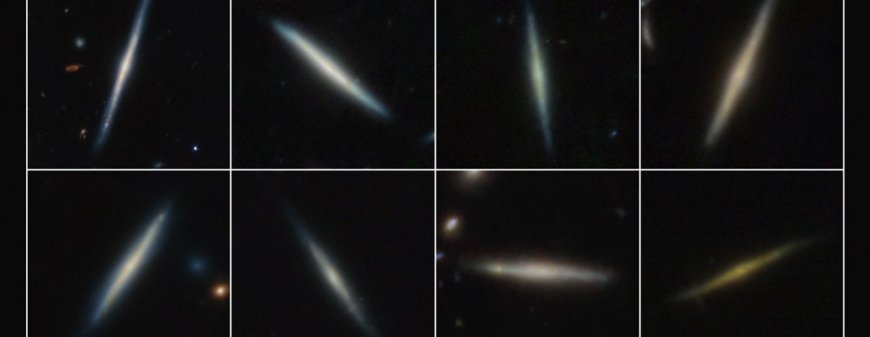Study Reveals How Disk Galaxies Form
A team of astronomers analyzed data from NASA's James Webb Space Telescope to study the formation of thick and thin disk galaxies. By examining 111 edge-on galaxies, they found that thick disk formation precedes thin disk formation, with the timing depending on the galaxy's mass. This research sheds light on the origins of disk galaxies and provides insights into the evolution of our own Milky Way galaxy.

Astronomers analyzed a sample of 111 edge-on galaxies using data from NASA's James Webb Space Telescope. The team found that thick disk formation precedes thin disk formation in disk galaxies. This study sheds light on the origins of disk galaxies.
Present-day disk galaxies typically have a thick outer disk and a thin embedded disk of stars. The team's analysis, spanning up to 11 billion years ago, provides insights into the evolution of these structures.
The team discovered that high-mass galaxies transitioned to two-disk structures around 8 billion years ago, while low-mass galaxies formed thin disks later, about 4 billion years ago. The findings align with the turbulent gas disk scenario, explaining the process of thick- and thin-disk formation.
Webb's capabilities allow astronomers to study early galaxies with unprecedented clarity. Future research aims to incorporate additional data points to enhance understanding of disk formation.
Published in the Monthly Notices of the Royal Astronomical Society, this study contributes to unraveling the mysteries of disk galaxies and their evolution.
According to the source: Mirage News.
What's Your Reaction?
 Like
0
Like
0
 Dislike
0
Dislike
0
 Love
0
Love
0
 Funny
0
Funny
0
 Angry
0
Angry
0
 Sad
0
Sad
0
 Wow
0
Wow
0























































































































































